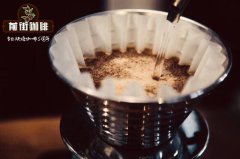Ethiopia Yega Fichelma Salesamie treats people like rose peach essential oil

Professional coffee knowledge exchange more coffee bean information please follow the coffee workshop (Wechat official account cafe_style)
Qianjie-introduction to the treatment of Ye Jia Xue Fay Kocher Martha Reza Honey
The Nordic offensive in 2018 began experimenting with honey-treated coffee in Ethiopia. This is an experimental batch of Israel Degfa, the owner of the processing plant! Israel Degfa, the owner of the processing station, is working on a sustainable development project and is investing more in improving quality. They have set up cooperatives, are certifying for the Rainforest Alliance, and have invested in fresh fruit flotation systems.
The coffee comes from a private processing station in Kochere (Yirgachefe) called Qore, named after the town where it is located, where he collects cherries from different small farmers. The processing station is owned by Israel Degfa. Qore means "sharp", such as a sharp knife or a sharp thorn on a plant. Israel Degfa fully manages the supply chain in 2018, and high-quality coffee beans sold directly are stored in the warehouse of the processing station.
About hundreds of farmers deliver a small amount of fresh coffee to the treatment station every day, and the farmers who send it to the treatment station own an average farm area of 1 hectare. Most coffees are grown organically and rarely trimmed. There are less than 1500 coffee trees that can be planted per hectare, and the fresh fruit yield of one tree is generally no more than 100,200g of raw coffee beans.
Before putting the whole fresh coffee fruit into the treatment process, it should be put into the pool for flotation, and the fresh fruit floating on the water surface should be screened out. After sorting the coffee, the remaining fresh fruits were peeled in an Agarde turntable peeling machine, which was divided into three grades according to density, and only one grade of density was used for honey treatment. After peeling and grading, the fresh coffee fruit still retains most of the pectin, then slowly dried flat on the sun rack bed and covered with a net at night. The next morning, the glued beans will be separated to avoid sticking together. The drying process lasts for 20 days, during which time the farmer picks and removes the defects.
Yega Shirley, Fisher, Kirchell, Martha, Reza, honey.
Country of origin: Ethiopia
Producing area: Yega Sheffield Cochel
Treatment station: Qore washing station
Variety: Ethiopian native species
Treatment method: honey treatment
Planting altitude: 1800-2100 m
Flavor: high temperature display: rose syrup peach sweet orange medium temperature display: canned orange peach low temperature display: bergamot
Knowledge: Ethiopia, the least developed country in the world, has been recognized as the birthplace of Arabica coffee, even coffee.
In short: Qianjie is a coffee research hall, happy to share the knowledge about coffee with you, we share unreservedly just to make more friends fall in love with coffee, and there will be three low-discount coffee activities every month. The reason is that Qianjie wants to make more friends drink the best coffee at the lowest price, which has been Qianjie's tenet for 6 years!
END
Important Notice :
前街咖啡 FrontStreet Coffee has moved to new addredd:
FrontStreet Coffee Address: 315,Donghua East Road,GuangZhou
Tel:020 38364473
- Prev

Ethiopia Yega Sheffield Fog Valley Sun Red Cherry Project Tropical Fruit flavors full on the palate
Professional coffee knowledge exchange more coffee bean information please follow the coffee workshop (Wechat official account cafe_style) front street-Ethiopia Yegashafi Fog Valley Red Cherry Project introduction Red Cherry Project (Operation Cherry Red) is led by the Dutch company Trabocca, half of the funding is sponsored by the Dutch government. Since 2005, I have worked with many small coffees.
- Next

Is Colombian Coffee beans or varieties Colombian Coffee Natural conditions win at the starting line
For more information about coffee beans, please follow the coffee workshop (Wechat official account cafe_style). Colombia is located in northwestern South America, bordering Venezuela and Brazil to the east, Ecuador and Peru to the south, Panama to the northwest, the Caribbean to the north and the Pacific Ocean to the west. With a land area of about 1.142 million square kilometers, it ranks first in South America.
Related
- Beginners will see the "Coffee pull flower" guide!
- What is the difference between ice blog purified milk and ordinary milk coffee?
- Why is the Philippines the largest producer of crops in Liberia?
- For coffee extraction, should the fine powder be retained?
- How does extracted espresso fill pressed powder? How much strength does it take to press the powder?
- How to make jasmine cold extract coffee? Is the jasmine + latte good?
- Will this little toy really make the coffee taste better? How does Lily Drip affect coffee extraction?
- Will the action of slapping the filter cup also affect coffee extraction?
- What's the difference between powder-to-water ratio and powder-to-liquid ratio?
- What is the Ethiopian local species? What does it have to do with Heirloom native species?

